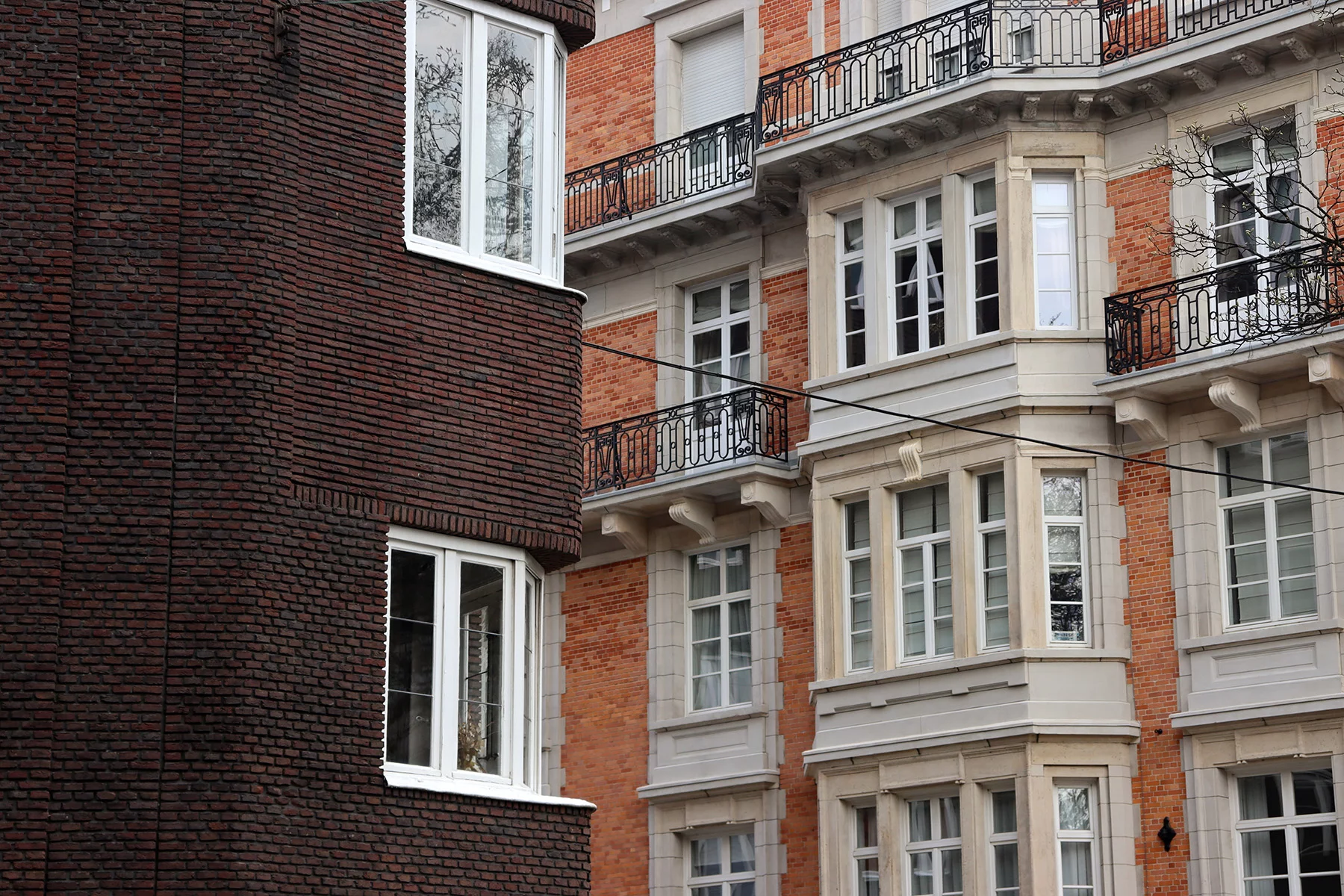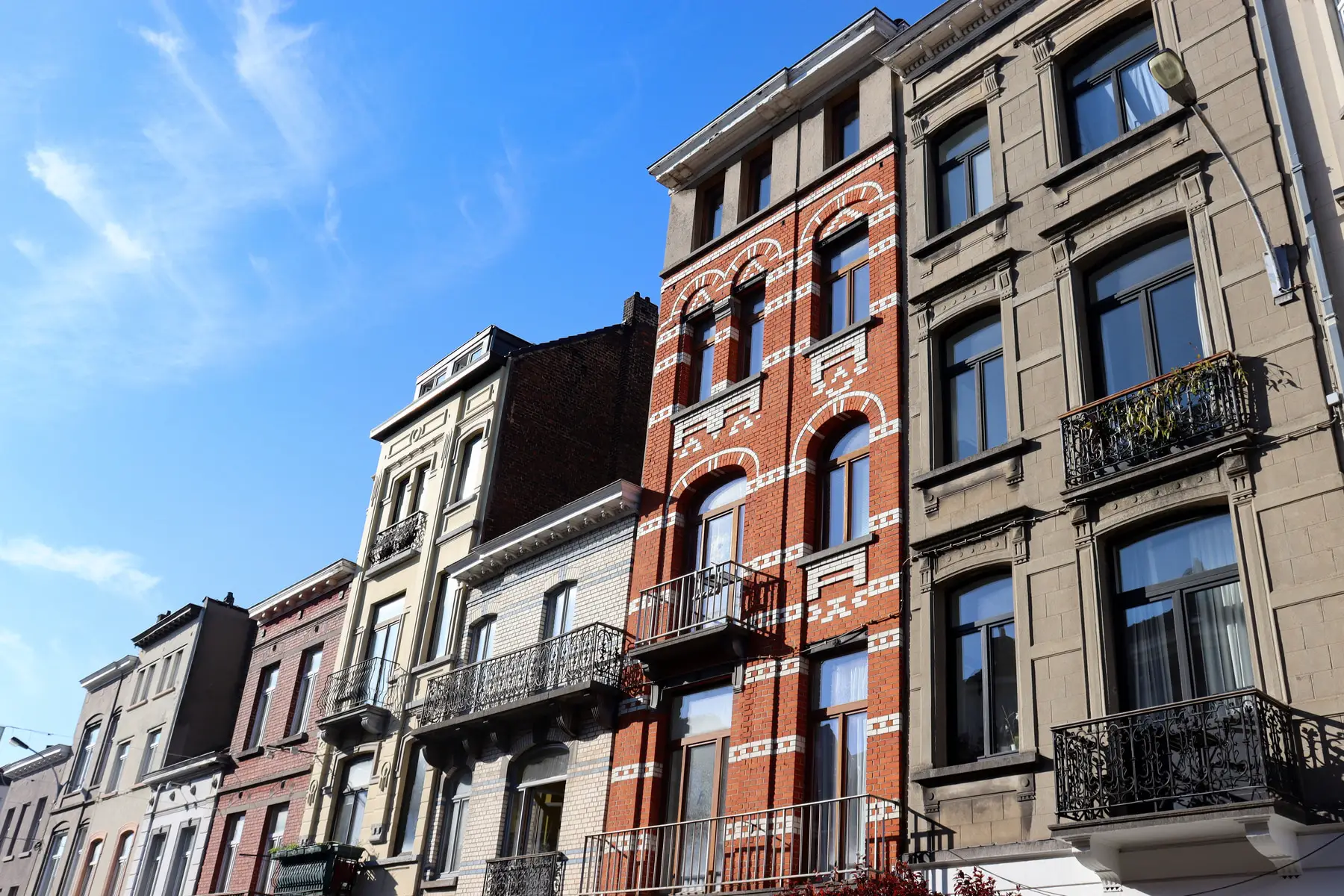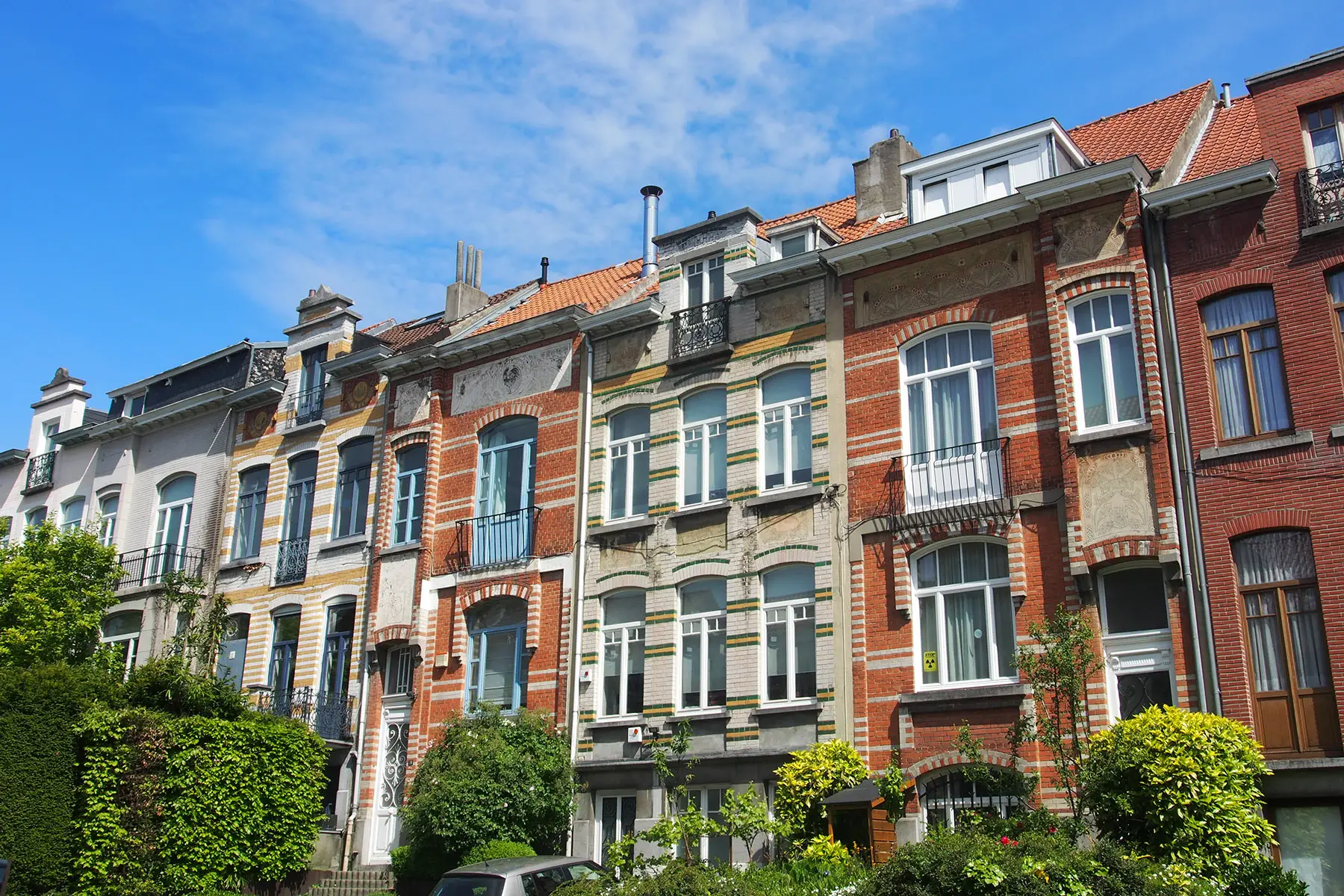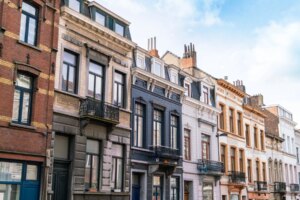If you want a change of scenery, Antwerp (Dutch: Antwerpen, French: Anvers) ranks first on any alphabetical list of large cities in Belgium. And why not? This charming port city in West Flanders (Dutch: West Vlaanderen, French: Flandre-Occidentale) has much to offer, whether you’re into historic architecture, beautiful nature, or a vibrant social life.
Find out neighborhood in Antwerp is right for you by reading the following:
Spotahome
Looking for somewhere to rent in Antwerp? Spotahome takes the hassle out of househunting by doing the hard work for you. Their online platform lets you find, view, and book rental properties all from the comfort of your own home. Take the stress out of househunting in Antwerp with Spotahome.
Why move to Antwerp?
Antwerp is Belgium’s second-largest city and one of the world’s major seaports. This dynamic and historic city in West Flanders (Dutch: West Vlaanderen, French: Flandre-Occidentale) is renowned for its vibrant culture, notable landmarks, and fine arts.
Its strategic location on the river Scheldt (Dutch: Schelde, French: Escaut) allowed extensive trade (and banking) during the late Middle Ages and the Renaissance.
Although Antwerp was significantly damaged by both World Wars, it has managed to recover and thrive. Today, the city continues to play a crucial role in international trade, particularly for diamonds, chemicals, and petroleum products.

With a population of roughly 545,000, Antwerp is a hub for expats, particularly those from outside the European Union (EU). In 2024, 23.7% of the city’s population were foreign nationals, and around 57.5% of Belgian residents had an international background.
The city scores pretty well in terms of quality of life. According to the European Commission’s 2023 Quality of Life Report, an incredible 93% of Antwerpians are satisfied with their city.
This high figure is perhaps understandable, because crime rates are low, and there are plenty of green spaces where residents can connect with nature. Better still, it is (much) more affordable than other major European cities like Paris, London, or even Brussels.
From a social perspective, Antwerp is generally inclusive and progressive. It hosts various LGBTQ+ events throughout the year, including Antwerp Pride. The city also strives to be accessible to people with disabilities; however, like many historical places, some areas have infrastructural challenges.
How to find housing in Antwerp
While housing costs are less expensive in Antwerp than in Brussels, prices have been increasing in recent years. Due to the competitiveness of the real estate market, it’s best to start your search as early as possible – months before you plan to move.
Just like most cities, your search for a place to live will most likely begin online. Some of the most popular online portals for renting and buying properties in Antwerp are:
To gain that extra competitive advantage, you can also enlist the help of a trusted real estate agent (Dutch: makelaar, French: agent immobilier).
Typical accommodation in Antwerp
Antwerp has a mix of medieval, Renaissance, Baroque, Art Nouveau, and modern architecture. The older parts of the historic city feature small cobblestone streets with charming row houses and gorgeous facades. Further out the city center, you’ll find contemporary houses and apartment buildings with a modern look.

The size and layout of housing vary by neighborhood. In the city center, the narrow townhouses often have multiple stories, with commercial spaces on the ground floor and apartments above. Outdoor space can be limited, although some might have small courtyards or rooftop terraces.
As you move further away from the city center, you’re more likely to find larger detached and semi-detached houses with spacious layouts and outdoor space.
What are the renting options in Antwerp?
The rental market in Antwerp consists of privately owned sublet properties and subsidized social housing options. Due to the city’s affordable rental prices and generous leases, renting is a more popular choice for expats looking to move to the area.
That said, there is a shortage of social housing, and low-income households are still at a disadvantage. Fortunately, Antwerp has made financial aid and property tax reductions available to help out low-earning renters and homeowners. You can find more information on housing assistance on the government’s website.
Real estate moves fast in Antwerp, so it’s recommended to keep a file with all the required documents for the rental application before you start your housing search.
What if you want to buy a property?
In the last decade, Belgium has experienced a rush on real estate. This peaked in 2021 when potential buyers had 10 minutes to see a house and make a decision. Prices (and stress levels) have since stabilized. Mortgage interest rates, however, continue to rise.
If you’re employed, you should be able to get a mortgage with no additional requirements – regardless of your nationality.
In August 2024, an apartment in Antwerp costs an average of €2,775 per square meter, while houses go away for €2,485 per square meter. By comparison, Bruges (Dutch: Brugge, French: Bruges) is the most expensive city in West Flanders, with a square meter price of €4,827 for apartments and €2,500 for houses.
Antwerp’s districts and neighborhoods
Antwerp is divided into nine administrative districts (Dutch: districten, French: arrondissements), each with its unique neighborhoods, character, and charm.
Before you rent or buy, it’s recommended that you visit the area in person to see which best suits your budget, needs, and preferences. Wherever you may end up, Antwerp’s public transport system will make sure you remain well-connected throughout the city and surrounding towns.
Keep reading for an overview of some of Antwerp’s most popular neighborhoods for expats.

Berchem
Nestled just south of the bustling city center, Berchem is one of Antwerp’s most charming and culturally rich districts, where urban life and suburban tranquility blend together seamlessly.
While known for its Art Nouveau homes, Berchem offers a variety of housing options, including modern apartments and spacious family houses. However, residents are never far from green spaces and nature. The district is home to several beautiful parks, such as the spacious Middelheim Park (Middelheimpark), known for its outdoor sculptures.
Berchem prides itself on its strong sense of community and welcoming atmosphere. It is especially known for its friendly residents and active community life, with plenty of opportunities to meet new people and socialize.
Expat families with children will also appreciate the close proximity to high-quality education, including several public, private, and international schools. Plus, with many families choosing to settle down in Berchem, your child will never want for a new friend.
Why you should move to Berchem
Berchem offers the perfect balance of suburban life and relative proximity to Antwerp’s urban bustle. It is the ideal district to start a family and put down long-term roots.
Eilandje
As you might expect, Eilandje (or “little island”) is located near the water. Situated just north of the historic city center, this is the oldest port area in Antwerp and originally served as a bustling hub for trade and shipping.
Over the past few decades, the neighborhood has undergone significant transformation. The once-industrial docks have now been redeveloped into one of the city’s hippest areas, with a focus on modernity and sustainable living.

Known for its lively cultural scene, Eilandje is home to numerous art studios, galleries, and museums where residents can experience contemporary and traditional works. Freelancers and creatives often choose it for its many co-working spaces and artsy vibe.
Eilandje also has plenty of cozy cafes and gourmet restaurants where foodies can get their fill. Thanks to its waterfront location, the neighborhood is renowned for its seafood and fresh dishes. International cuisine is also well-represented, with restaurants serving flavors from around the world.
Housing options in Eilandje include modern apartments, stylish lofts, and luxurious penthouses. Although property prices are slightly higher compared to other parts of Antwerp, the neighborhood’s amenities and location make it a worthwhile investment for many.
Why you should move to Eilandje
Expats are drawn to this up-and-coming neighborhood by its stunning waterfront views, modern architecture, and bustling cultural scene.
Harmonie and ‘t Groen Kwartier
If you like food, vintage design, and eco-friendly living, Harmonie and ‘t Groen Kwartier are two neighborhoods well worth exploring. While less crowded than other areas of Antwerp, these trendy districts southeast of the city center are popular with people seeking a peaceful retreat from the bustling city.
Harmonie features tree-lined streets with stately mansions and elegant townhouses, reflecting the grandeur of the city’s historical past. Key parts of this neighborhood are Harmony Park (Harmoniepark) and King Albert Park (Koning Albertpark), where you can unwind, enjoy open-air concerts, and get in touch with nature.

‘t Groen Kwartier (or “The Green Quarter”), on the other hand, is a relatively new development. Offering a blend of historic apartment buildings and contemporary lofts, this urban oasis has a focus on modern living with an emphasis on sustainability.
What makes ‘t Groen Kwartier so special is its innovative culinary scene. It is home to several trendy restaurants and cafes, many of which focus on locally sourced ingredients. One of the gastronomical highlights is The Jane, a Michelin-starred restaurant housed in a beautifully restored chapel.
While property prices are higher than elsewhere in the city, residents appreciate the serene ambiance, lush green spaces, and easy access to nearby districts and their cultural venues.
Why you should move to Harmonie or ‘t Groen Kwartier
Whether you’re drawn to Harmonie’s historic elegance or ‘t Groen Kwartier’s modern sustainability, the area’s welcoming community and rich lifestyle will make you feel right at home.
Hoboken
Expats looking for affordable housing might find a home in the family-friendly district of Hoboken. Once a small village with shipyards and factories, the district in the southern part of Antwerp is now a lively residential area with abundant parks and green spaces.
The district’s star attraction is the Hobokense Polder, a sprawling nature reserve and local hot spot for hiking, birdwatching, and picnicking. Sports fans can also revel in the district’s active lifestyle, with its many tennis courts, soccer fields, and swimming pools.
Hoboken is well-known for its local Belgian cuisine, with many cafes and family-owned restaurants offering traditional dishes made from fresh, local ingredients. Residents who love to cook can recreate the recipes by visiting Hoboken Market (Hobokense market), one of the district’s weekly highlights. Here you can buy fresh produce, fish, cheese, flowers, linens, and more.

Hoboken has an active community that attracts families and working professionals alike. Residents often participate in local events and neighborhood initiatives, making it a great place for expats to integrate and build a home.
Why you should move to Hoboken
Hoboken residents enjoy a slower village life that’s not overwhelmingly busy, while still being connected to Antwerp.
Merksem
If Hoboken doesn’t work out, you can always try to find green living options in family-friendly Merksem. This neighborhood north of Antwerp stands out as one of the most welcoming districts, albeit with a strong local identity and long-standing traditions.
Merksem dates back to Roman times, and its rich history is still visible in its architecture and public spaces. However, the district’s standout feature is Rivierenhof Park, one of the largest nature reserves in Antwerp. A central point for leisure and entertainment, the park offers scenic walking paths and cycling routes, as well as open-air concerts and events.
Multicultural Merksem is characterized by its strong sense of community and inclusivity. Residents are known for their friendliness and active participation in local events that showcase the district’s diverse population.
Families are often drawn to Merksem for its safe and supportive environment. Children have plenty of space to play and explore, while the close-knit community ensures parents have a supportive network. Better still, the district’s schools are known for their high educational standards and nurturing environments, making it an ideal place for families to settle.
Why you should move to Merksem
Merksem has a special charm that many residents feel stands out from other parts of Antwerp.
Quartier Latin
Nestled in the heart of Antwerp, Quartier Latin (or simply Theaterbuurt) has long been a center for intellectual and artistic life. The neighborhood is full of art studios, galleries, and museums that showcase both established and emerging artists.

However, the area is most famous for its many theaters and associated restaurants, including the Arenberg Theater (Arenbergschouwburg), the Bourla Theater (Bourlaschouwburg), and the City Theater (Stadsschouwburg).
Fashionistas will also enjoy its many independent boutiques and high-end fashion stores. Quartier Latin is particularly known for its focus on sustainable and ethical fashion, with many retailers showcasing local designers who prioritize environmentally friendly techniques.
Housing options in Quartier Latin include an array of architectural styles. Many of the historical buildings have been meticulously preserved and restored. However, you can also find modern apartments and townhouse lofts that blend seamlessly with their historic surroundings.
Why you should move to Quartier Latin
With its thriving cultural scene and vibrant nightlife, Quartier Latin (or the Theaterbuurt) is a magnet for people looking to experience the buzz of urban Antwerp.
‘t Zuid and Nieuw Zuid
Located on the southern edge of Antwerp’s city center, the neighborhoods of ‘t Zuid and Nieuw Zuid stand out for their vibrant social scene. While hip ‘t Zuid is an established cultural hotspot, up-and-coming Nieuw Zuid is perfect if you like an alternative and less touristy atmosphere.
Famous for its vibrant nightlife and diverse dining scene, ‘t Zuid is filled with trendy bars, chic cafes, and gourmet restaurants where bon vivants spend endless days and nights on cozy terraces. The neighborhood is a place to see and be seen, typically with a cocktail in hand.
The artistic heart of Antwerp, ‘t Zuid is home to small galleries and large museums, including the Photo Museum Antwerp (Fotomuseum – FOMU), the Museum of Contemporary Art (Museum van Hedendaagse Kunst – M HKA), and the Royal Museum of Fine Arts Antwerp (Koninklijk Museum voor Schone Kunsten Antwerpen – KMSKA).

Opposite ‘t Zuid, you’ll find Nieuw Zuid with its raw and unconventional vibe. Creative minds and free spirits are drawn to this neighborhood dotted with trendy coffee bars, charming bistros, and underground music venues. Perhaps conversely, the area is also a growing hub for business and innovation, with many tech companies and startups choosing to set up in Nieuw Zuid.
In terms of practical amenities, both neighborhoods offer excellent healthcare facilities, including clinics, hospitals, and specialized medical centers. While most schools are a mix of public and private, ‘t Zuid also has an international school. Residents can visit nearby parks, such as the Leopold de Waelplaats, for green relaxation.
Why you should move to ‘t Zuid or Nieuw Zuid
Whether you’re drawn to the here-and-now vibe of Zuid or the future-forward spirit of Nieuw Zuid, these trendy neighborhoods are ideal for young professionals looking for a cosmopolitan and artistic lifestyle.
Other neighborhoods to check out
While this article delves into only a couple of Antwerp’s neighborhoods, there are plenty more to choose from.
Antwerp’s other districts include:
- Berendrecht-Zandvliet-Lillo (Bezali) – the least populated district of Antwerp, young starters and families look here for affordable housing with spacious gardens
- Borgerhout – often referred to as Boho, this popular residential area has a village-like feel and offers a mix of affordable and pricey housing options
- Deurne – the greenest part of Antwerp, this tranquil neighborhood is only a 15-minute bike ride away from the big city
- Ekeren – although it has retained its village vibe, the stately homes in this neighborhood have prices that can go up to a million euros
- Wilrijk – a district of big extremes, housing options range from affordable row houses to multimillion-euro luxury villas. Wilrijk also hosts an annual jazz festival in Park Den Brandt.
Are there places to avoid in Antwerp?
Antwerp has a moderate crime rate, with around 14.7% of all reported crimes happening in the busy port city (2023). Most offenses involve theft and extortion, bodily harm, and drug-related crimes. In 2023, there were also 6,991 reports of domestic violence.

While most parts of Antwerp are safe, you should remain cautious and exercise common sense when walking alone at night or in busy areas where pickpocketing might occur. Police also advise people to take precautions when visiting Schipperskwartier (near Eilandje) and the Seefhoek, especially around De Coninckplein and Sint-Jansplein.
In terms of air quality and pollution, Antwerp – and Belgium as a whole – is doing rather poorly. In 2021, the country had the fourth highest exposure to Particulate Matter in the EU. Even though air quality has improved over the past decade, you may want to avoid buying or renting a home in certain areas near airports and highways.
Tips on choosing a neighborhood in Antwerp
Whether you’re renting on a budget or buying a million-euro home, you’ll want to find a place that suits you best. Here are a few tips to keep in mind when looking for a house in Antwerp:
- Safety – how does the neighborhood feel during the day and night?
- Local amenities – how easy is it to access what you need and enjoy? Do the neighborhood schools meet your requirements?
- Transportation – can you get around using your chosen mode of transportation? How long will it take you to commute to work?
- Lifestyle compatibility – are you sporty, social, or seeking peace and quiet? Find out if the neighborhood suits your lifestyle.
You can also get great advice (and create new friendships) from different expat groups in Antwerp. For example:
Useful resources
- City of Antwerp – official government website of the city
- Visit Antwerp – government city guides highlighting popular neighborhoods in Antwerp
- New in Antwerp – practical tips and information for new residents in English and several other languages
- 2023 Report on the quality of life in European cities – official report by the European Commission







